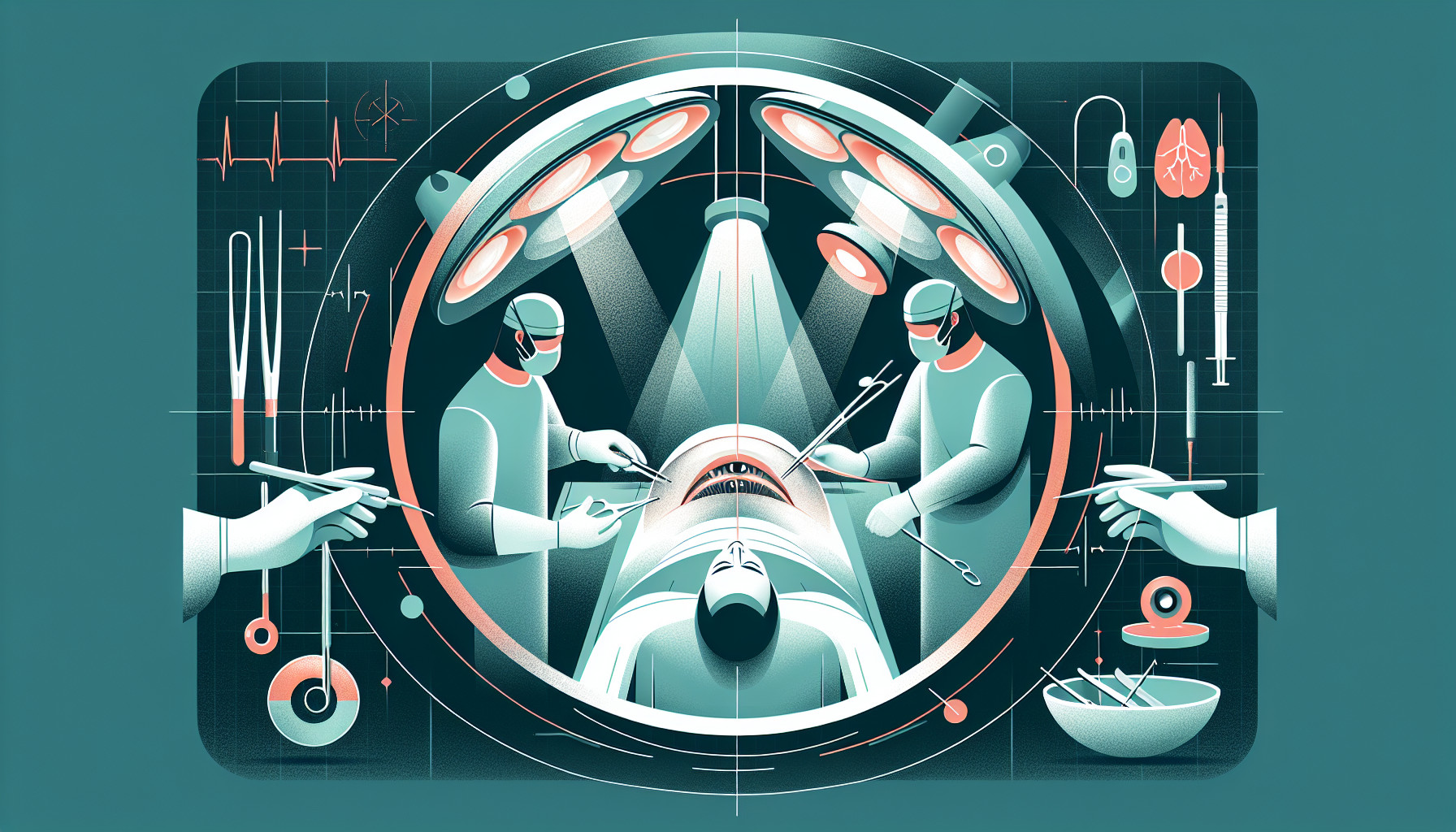Our Summary
This research paper reviews various studies on the effect of cataract surgery on eye pressure in patients with glaucoma. The key findings are that cataract surgery often lowers eye pressure and is an important treatment for a type of glaucoma called ‘angle closure glaucoma.’ Some minor glaucoma surgeries are beneficial when done at the same time as cataract surgery, but more data is needed to determine the best timing. The reason why eye pressure drops after cataract surgery is still unknown.
The paper suggests that people suspected of having glaucoma and significant cataracts would benefit from cataract surgery. Those with mild to moderate glaucoma damage on 1-2 classes of medications would benefit from additional minor glaucoma surgeries. Patients with advanced glaucoma would benefit from cataract surgery and another surgery, which would depend on the specifics of their condition and individual factors. The practice of removing a clear lens as a primary procedure for patients with angle closure and high eye pressure or glaucoma is becoming more common. The role of additional minor glaucoma surgeries in angle closure needs further research.
FAQs
- Does cataract surgery have an effect on intraocular pressure in patients with glaucoma?
- When should micro-invasive glaucoma surgeries be combined with cataract surgery?
- How does cataract surgery benefit patients with different stages of glaucoma and visually significant cataracts?
Doctor’s Tip
A helpful tip a doctor might tell a patient about cataract surgery is to follow post-operative instructions carefully, including using prescribed eye drops as directed and attending follow-up appointments. This will help ensure proper healing and optimal outcomes after surgery.
Suitable For
Patients who are glaucoma suspects with visually significant cataracts, those with mild-moderate damage on 1-2 classes of medications, and those with advanced disease would all benefit from cataract surgery. Additionally, patients with angle closure glaucoma and high IOP or glaucoma may benefit from clear lens extraction as a primary procedure. Micro-invasive glaucoma surgeries (MIGS) may also be performed at the time of cataract surgery, depending on the patient’s individual factors and disease status. The role of additional MIGS in angle closure glaucoma requires further study.
Timeline
Before cataract surgery:
- Patient will undergo a comprehensive eye exam to determine the severity of their cataracts and any other eye conditions
- The patient will meet with their ophthalmologist to discuss the procedure, potential risks and benefits, and what to expect before, during, and after surgery
- The patient may need to undergo additional tests such as measurements of the eye, imaging tests, and blood tests
- The patient may need to stop taking certain medications before surgery
- The patient will be advised on how to prepare for surgery, including fasting before the procedure
After cataract surgery:
- The patient may experience some discomfort, redness, or irritation in the eye immediately after surgery
- The patient will be given eye drops to prevent infection and reduce inflammation
- The patient will need to wear an eye shield or glasses to protect the eye while it heals
- The patient will have a follow-up appointment with their ophthalmologist to monitor their progress and check for any complications
- The patient will be advised on how to care for their eye during the healing process, including avoiding strenuous activities and not rubbing the eye
- The patient’s vision may be blurry or hazy at first, but will gradually improve over the following days and weeks as the eye heals.
What to Ask Your Doctor
What is the success rate of cataract surgery in patients with glaucoma?
Will cataract surgery lower my intraocular pressure (IOP) and potentially reduce my need for glaucoma medication?
Are there any specific risks or complications associated with cataract surgery in patients with glaucoma?
Will I need to continue using glaucoma medication after cataract surgery?
Are there any additional procedures, such as micro-invasive glaucoma surgeries (MIGS), that could be performed during cataract surgery to further lower my IOP?
How soon after cataract surgery can I expect to see improvements in my vision and IOP levels?
What is the long-term outlook for my glaucoma following cataract surgery?
Are there any lifestyle changes or precautions I should take after cataract surgery to protect my eye health, especially in relation to my glaucoma?
How frequently will I need to follow up with my doctor after cataract surgery to monitor my eye health and IOP levels?
Are there any alternative treatment options or considerations I should be aware of before proceeding with cataract surgery as a patient with glaucoma?
Reference
Authors: Sabharwal J, Garg AK, Ramulu PY. Journal: Curr Opin Ophthalmol. 2024 Mar 1;35(2):147-154. doi: 10.1097/ICU.0000000000001021. Epub 2023 Nov 29. PMID: 38018796
